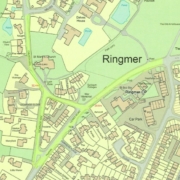⚠️Temporary Closure of Fingerpost Field Play Park – Friday, 7th November 2025 ⚠️
/in News /by Carol HodgsonFINGERPOST FIELD PUBLIC CONSULTATION – COMMUNITY FEEDBACK SURVEY
/in News /by Carol HodgsonPCSO Surgery
/in News /by ClerkIn light of the recent spate of anti-social behaviour in the village, PCSO Alan Ash will be holding a surgery in a police communications van on Saturday 24th October between 2.30 pm and 4.30pm at the North Road car park on the Green. Residents are invited to go along to discuss their concerns and receive advice.
Additionally, the following link is to a survey which will inform the police of the village’s top 3 priorities and concerns for action. Download and complete the survey and return direct to PCSO Ash on Saturday, or email to: clerk@ringmerparishcouncil.gov.uk and we will forward on:
Upcoming works on B2192 between the A26 and Halland (Update 28-Oct-25 )
/in News /by Carol Hodgson![]() UPDATE
UPDATE ![]()
Lewes Bonfire Operation Update – Travel, Safety and Choose Local
/in News /by Carol HodgsonReleased on behalf of British Transport Police, East Sussex County Council, East Sussex Fire & Rescue Service, East Sussex Highways, Southern Railway, Brighton & Hove Buses, Lewes District Council, South East Coast Ambulance Service, Sussex Police and St John Ambulance.
Public safety is the top priority for all agencies involved in managing the Lewes Bonfire celebrations.
Despite the event taking place mid-week, on Wednesday 5th November, we still anticipate high levels of attendance. Combined with significant amounts of fireworks, this presents a unique challenge to the multi-agency group tasked with ensuring public safety.
As with previous years, a series of travel restrictions will be introduced to help reduce the risks associated with this event and safely reduce the number of people attending.
We ask that you do not attend Lewes Bonfire unless you are local because the crowds and narrow streets can present unique safety challenges.
The decision to bring in travel restrictions has been made in the best interests of safety, by limiting the number of people attending. It is hoped that those who are inconvenienced will understand that and have time to make alternative arrangements where possible. It is recognised this will impact motorists and train passengers who are not planning to attend the event.
Road closures from 4.45pm on Wednesday 5 November 2025
- A27 junction with A277 Brighton Road (Ashcombe Roundabout)
- A275 Offham Road with B2116 Plumpton Road
- C7 Kingston Road junction with C324 Wellgreen Lane
- A26 junction with A2029 Malling Street
- A26 Church Lane junction with Mayhew Way
Lewes residents are advised to get vehicles home before 4pm to avoid any road closures in place. Visitors are advised not to bring vehicles into the town.
Rail Travel
Trains will not be stopping at Lewes or the surrounding stations of Falmer, Cooksbridge, Glynde and Southease from 5pm until the start of service the following day, 6th November.
Commuters to London are warned the last trains back from Victoria to these stations will leave at 3.24pm and 3.54pm.
Staying Safe
Police officers will be working closely with partners to maintain order, prevent crime, and respond swiftly to any incidents.
Everyone attending is asked to play their part in keeping the event safe. If you see suspicious activity or something that doesn’t feel right, report it immediately to a steward or a police officer. In an emergency, always call 999.
By staying alert and acting responsibly, we can ensure this remains an event that everyone can enjoy safely.
Highly trained St John Ambulance volunteers will be providing first aid for anyone in need of assistance during the event.
The charity encourages everyone to remain safe, to not pick up spent fireworks and torches and, in the event of a burn or other issue requiring first aid, to familiarise themselves with some simple treatments. These can be found on the St John Ambulance website at https://www.sja.org.uk/first-aid-advice/burns-and-scalds/, where there is also a wealth of free first aid advice and detailed treatment videos.
Choose Local
If you are not a resident of Lewes, we would encourage you to attend fireworks events closer to home and not to attend Lewes Bonfire Night.
Visit: Choose Local is back for Bonfire Season! | East Sussex Fire & Rescue Service for more information on local firework events across East Sussex.
Latest News from Lewes District Council – Wednesday 15 October 2025
/in News /by Carol HodgsonAlternate weekly waste collections to be introduced in February 2026
Lewes District Council will introduce alternate weekly collections for household waste and recycling in February 2026, to increase the district’s recycling rate.
The new system will see refuse (black sack waste) collected fortnightly, while recycling collections will also remain fortnightly, alternating with the refuse collection day. Crucially, weekly food waste collections will continue, along with weekly collections for non-infectious medical waste for those who register.
This follows an online engagement exercise indicating residents’ appreciation for the Lewes district waste collection service, with 89% of the 2,150 respondents saying they were ‘satisfied’ or ‘very satisfied’ with it.
Councillor Wendy Maples, Cabinet Member for Neighbourhood Wellbeing, said:
“I am really pleased that the vast majority of our residents who took part in the survey are happy with our current waste service, recognising the hard work of our excellent crews. This positive feedback provides a solid foundation as we move towards a more sustainable collection system for our district.
“The resident engagement exercise indicates a high level of local support for the principle: 97 per cent of respondents think it is important or very important to recycle from home. And 71 per cent told us they currently put out a refuse bin each week that is not full.
The feedback we received through the survey and our 11 face-to-face pop-up sessions—which saw close to 800 new or additional bins requested— suggests that many residents are happy to embrace a two-weekly refuse collection, provided food waste and clinical waste services stay weekly.”
Based on other district and borough experiences, alternate weekly collections – while keeping food waste weekly -will encourage more people to use their food waste caddies and make best use of recycling collections. It will also reduce the council’s carbon footprint by having fewer collection vehicles on the roads, and will reduce the volume of waste going to the incinerator.
Councillor Maples added: “We understand that any change can cause concern, so our priority is to make this transition as smooth as possible. The survey was an important part of that — and I am grateful to everyone who provided valuable feedback. Following on from this, we’ve expanded our alternate weekly collection FAQs and are making information readily available, including the full engagement report on our website at lewes-eastbourne.gov.uk/awc
“To help residents prepare for the change, we remind them they can sign up for free food waste collections, request extra or bigger recycling bins, or request assisted collections.
These can all be done via the council website at lewes-eastbourne.gov.uk/bins-waste-and-recycling.
For concerns about pests, residents are reminded to put the food waste caddy handle all the way forward to ‘lock’ the lid shut.”
Residents will be contacted in the new year with their new collection calendars detailing the exact start date for their household.
Fingerpost Field Public Consultation – Community Feedback Survey
/in News /by Carol HodgsonFingerpost Field in Ringmer is already home to a skatepark and children’s playground. We want to make it even better. Whether you’re a parent, teenager, sports fan, or just someone who enjoys the outdoors – your voice matters.
Please take a few minutes to complete the survey below and tell us what you think. Your feedback will help shape how this valued community space is improved in the future.
Subscribe to Our Newsletter
Ringmer Parish Council
Triple Twinning Partnership with Geschwenda, Germany and Belgentier, France.
Mrs Annie Hazzard
Clerk & RFO
Email: clerk@ringmerparishcouncil.gov.uk
Tel. No.: 01273 813 242 / 07565 704 342








